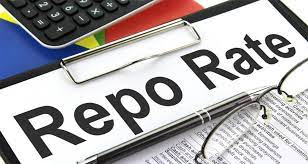In their bi-monthly meeting, RBI’s (Reserve Bank of India) Monetary Policy Committee (MPC) kept the repo rate unchanged at 4% and reverse repo rate at 3.35%. This is the seventh consecutive time that RBI has decided to keep these key rates unchanged.
With this, RBI intends to maintain the status quo as long as necessary to mitigate the current economic downturn. For borrowers, this is good news, as financial institutions are not likely to hike interest rates on loans any time soon.
The following sections will explain the meaning of repo rates and how it impacts home loan rates.
What is repo rate?
When commercial financial institutions need to raise money, RBI grants them short-term loans against government securities. The interest rate at which these loans are given is called repo rate or repurchase rate. All financial institutions borrow money from the RBI to meet their day to day commitments.
All financial institutions come to an arrangement with the RBI to repurchase these government securities at an upcoming date at a pre-decided value. On contrary, when financial institutions have surplus funds not in use, they can park it with RBI and earn interest at a rate called the reverse repo rate (RRR).
How do repo rates affect the economy?
Repo rate is one of the main instruments used by RBI, to tackle inflation or increased liquidity in the economy. The levels of repo directly affect the cost of borrowing for and, thus, influence interest rates for both lenders and depositors.
The higher the repo rates, the higher the cost of borrowing for banks leading to high interest rates for loans and deposits. Likewise, a lower repo rate means more low interest rates on loans.
When there is a rise in inflation, RBI can increase the repo rate to decrease money flow in the economy. This makes borrowing a costly affair for industries and businesses, leading to slowing down investment and money supply. As a result, economic growth slows down, lowering inflation.
On the other hand, when RBI requires pumping funds into the economy, it can lower the repo rate. Then, businesses and industries will find it cheaper to borrow more money, increasing the overall liquidity in the market.
Effects of repo rates on a housing loan
Changes in the repo rates directly impact big loans like home loans. Low repo rates bring in growth and enhance economic growth in the country. A reduction in repo rates leads to less cost of borrowing for the financial institutions that pass the benefits to the consumers.
Hence, financial institutions reduce interest rates and the MCLR (Marginal Cost of Funds Lending Rate) following a decrease in repo rate. This further reduces your loan’s EMI, provided that it has a floating interest rate.
Home loan borrowers can also choose between floating and fixed interest rates depending on the current market scenario. Unlike fixed interest rates, floating one allows them to benefit from a fall in repo rates.
Effect of the current repo rate on home loan interest
Firstly, the unchanged repo rate means existing borrowers can continue paying the same low EMI they have been paying since they avail a home loan.
However, if your home loan is more than five years old, it may not be linked to the external benchmark. As a result, you could still be paying a higher interest rate than what’s being charged for the new loans.
If you are paying higher interest rates, you can ask your existing lender to switch to an ERB-linked loan. If they refuse to do so, you can always choose a home loan balance transfer to take advantage of revised rates.
Financial institutions also offer pre-approved offers to make it easier for borrowers to get access to funds in an emergency. You can check your pre-approved offer for a variety of financial products like loan against property, home loans etc.
Hence, these are some of the essential factors of repo rate that both new and existing home loan borrowers should know. It will help them make better borrowing decision.



